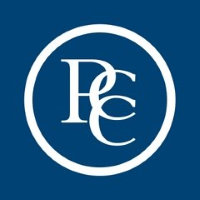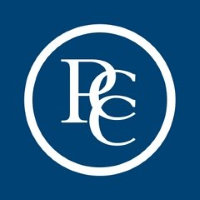
Power Corporation of Canada
TSX:POW


| US |

|
Johnson & Johnson
NYSE:JNJ
|
Pharmaceuticals
|
| US |

|
Berkshire Hathaway Inc
NYSE:BRK.A
|
Financial Services
|
| US |

|
Bank of America Corp
NYSE:BAC
|
Banking
|
| US |

|
Mastercard Inc
NYSE:MA
|
Technology
|
| US |

|
UnitedHealth Group Inc
NYSE:UNH
|
Health Care
|
| US |

|
Exxon Mobil Corp
NYSE:XOM
|
Energy
|
| US |

|
Pfizer Inc
NYSE:PFE
|
Pharmaceuticals
|
| US |

|
Palantir Technologies Inc
NYSE:PLTR
|
Technology
|
| US |

|
Nike Inc
NYSE:NKE
|
Textiles, Apparel & Luxury Goods
|
| US |

|
Visa Inc
NYSE:V
|
Technology
|
| CN |

|
Alibaba Group Holding Ltd
NYSE:BABA
|
Retail
|
| US |

|
3M Co
NYSE:MMM
|
Industrial Conglomerates
|
| US |

|
JPMorgan Chase & Co
NYSE:JPM
|
Banking
|
| US |

|
Coca-Cola Co
NYSE:KO
|
Beverages
|
| US |

|
Walmart Inc
NYSE:WMT
|
Retail
|
| US |

|
Verizon Communications Inc
NYSE:VZ
|
Telecommunication
|
Utilize notes to systematically review your investment decisions. By reflecting on past outcomes, you can discern effective strategies and identify those that underperformed. This continuous feedback loop enables you to adapt and refine your approach, optimizing for future success.
Each note serves as a learning point, offering insights into your decision-making processes. Over time, you'll accumulate a personalized database of knowledge, enhancing your ability to make informed decisions quickly and effectively.
With a comprehensive record of your investment history at your fingertips, you can compare current opportunities against past experiences. This not only bolsters your confidence but also ensures that each decision is grounded in a well-documented rationale.
Do you really want to delete this note?
This action cannot be undone.

| 52 Week Range |
36.04
47.66
|
| Price Target |
|
We'll email you a reminder when the closing price reaches CAD.
Choose the stock you wish to monitor with a price alert.

|
Johnson & Johnson
NYSE:JNJ
|
US |

|
Berkshire Hathaway Inc
NYSE:BRK.A
|
US |

|
Bank of America Corp
NYSE:BAC
|
US |

|
Mastercard Inc
NYSE:MA
|
US |

|
UnitedHealth Group Inc
NYSE:UNH
|
US |

|
Exxon Mobil Corp
NYSE:XOM
|
US |

|
Pfizer Inc
NYSE:PFE
|
US |

|
Palantir Technologies Inc
NYSE:PLTR
|
US |

|
Nike Inc
NYSE:NKE
|
US |

|
Visa Inc
NYSE:V
|
US |

|
Alibaba Group Holding Ltd
NYSE:BABA
|
CN |

|
3M Co
NYSE:MMM
|
US |

|
JPMorgan Chase & Co
NYSE:JPM
|
US |

|
Coca-Cola Co
NYSE:KO
|
US |

|
Walmart Inc
NYSE:WMT
|
US |

|
Verizon Communications Inc
NYSE:VZ
|
US |
This alert will be permanently deleted.
 Power Corporation of Canada
Power Corporation of Canada
Power Corporation of Canada
Investor Relations
Power Corporation of Canada, established in 1925, is like the keystone in the arc of Canada’s financial landscape. Originally founded to harness electricity, it shifted its focus over the decades, creating an intricate web of influential businesses. Today, Power Corporation is a diversified management and holding company with interests primarily in financial services, asset management, and renewable energy. Through its subsidiaries—and notably via its key stake in Power Financial Corporation—the company has a sturdy foothold in insurance and wealth management, chiefly through its holdings in Great-West Lifeco and IGM Financial. These subsidiaries provide a variety of financial products and services, effectively making Power Corporation an integral part of the economic fabric in regions where it operates. Its reach extends beyond the canadian borders through investment in European financial institutions and involvement in sustainable energy initiatives.
A distinctive hallmark of Power Corporation’s approach is its shrewd and patient investment strategy. It not only nurtures its established investments but is also keen on future-oriented initiatives, with a particular interest in sustainability. By leveraging long-term capital allocation, Power Corporation has been able to achieve stable earnings through dividends from its subsidiaries and investment income. A strategic pivot towards renewable energy and an increased focus on Asia’s burgeoning markets are evidence of the company’s forward-thinking ethos. At its core, Power Corporation’s model of accumulating operational expertise and executing business decisions through deeply-rooted family stewardship enables it to maintain its position as a bastion of stability and growth in the global financial landscape, guided by a philosophy that intertwines conservatism with progressivism.

Power Corporation of Canada, established in 1925, is like the keystone in the arc of Canada’s financial landscape. Originally founded to harness electricity, it shifted its focus over the decades, creating an intricate web of influential businesses. Today, Power Corporation is a diversified management and holding company with interests primarily in financial services, asset management, and renewable energy. Through its subsidiaries—and notably via its key stake in Power Financial Corporation—the company has a sturdy foothold in insurance and wealth management, chiefly through its holdings in Great-West Lifeco and IGM Financial. These subsidiaries provide a variety of financial products and services, effectively making Power Corporation an integral part of the economic fabric in regions where it operates. Its reach extends beyond the canadian borders through investment in European financial institutions and involvement in sustainable energy initiatives.
A distinctive hallmark of Power Corporation’s approach is its shrewd and patient investment strategy. It not only nurtures its established investments but is also keen on future-oriented initiatives, with a particular interest in sustainability. By leveraging long-term capital allocation, Power Corporation has been able to achieve stable earnings through dividends from its subsidiaries and investment income. A strategic pivot towards renewable energy and an increased focus on Asia’s burgeoning markets are evidence of the company’s forward-thinking ethos. At its core, Power Corporation’s model of accumulating operational expertise and executing business decisions through deeply-rooted family stewardship enables it to maintain its position as a bastion of stability and growth in the global financial landscape, guided by a philosophy that intertwines conservatism with progressivism.






























 You don't have any saved screeners yet
You don't have any saved screeners yet
